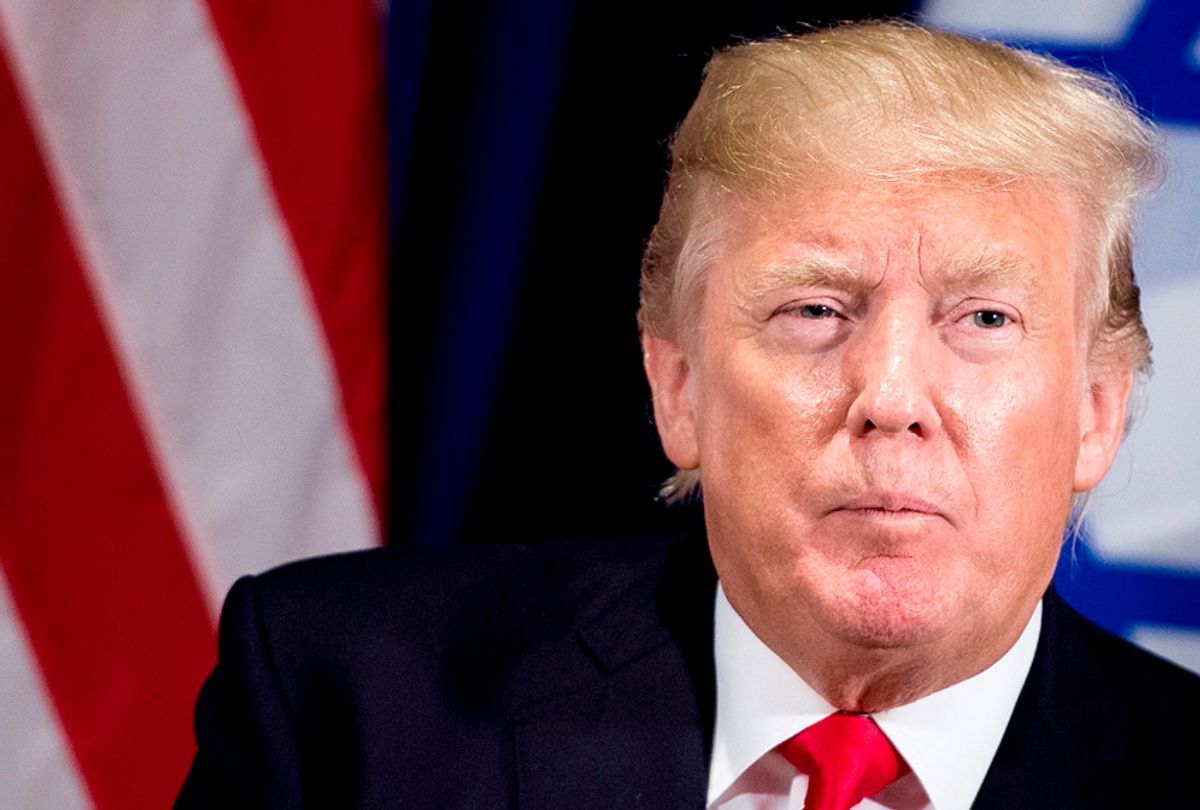
Trump’s economic agenda for 2018 is both largely predictable and deeply unrealistic. With a boost from his deficit-busting tax reforms, the Congressional Budget Office now forecasts U.S. federal budget deficits averaging $1 trillion per year over the next decade (2018-2027).
That tells us that Trump is virtually certain to propose deep spending cuts across most domestic areas, excluding the Pentagon.
The outstanding question is whether he will reassure his base that their entitlements are off-limits — or cast his lot with those in the Republican Party determined to privatize and cut Medicare and Medicaid.
Trump can continue to grandstand
Wherever Trump lands on budget cuts, it will probably be mainly for show.
Given the GOP’s prospects for the November 2018 mid-term elections and given Mitch McConnell’s single-vote majority in the Senate, there is a very comfortable scenario for Trump: It is unlikely that this Republican Congress will be able to pass any budget resolution in 2018, much less tackle anything as explosive as cutting the big entitlement programs.
No real action on infrastructure
Beyond budget cuts, Trump’s most likely new initiative will involve yet more tax breaks for private investors, this time in the infrastructure sector.
That’s a non-starter for most Democrats, who want new infrastructure spending — period. And in the likely absence of a budget resolution, Trump can’t use the reconciliation process (which requires only a majority vote) to sidestep the Democrats. So here too, the likely outcome is no action at all.
Trade initiatives?
In his upcoming State of the Union address, to be delivered on January 30, Trump will certainly say something about trade, especially since a widening budget deficit will lead to a higher trade deficit.
He could try to preempt the inevitable criticism by threatening reprisals against China for selling us low-priced goods, beyond the new tariffs he has already imposed on solar panels and washing machines.
Trump will also call for changes in NAFTA. But tearing up the agreement as he once promised is off the table, because it would split the GOP in Congress.
Above all else, Trump cannot tolerate such a split, because his best defense against the growing menace of the Mueller investigation relies on united support from GOP senators and representatives.
Helping the “forgotten” Americans?
Perhaps the most interesting question about Trump’s State of the Union speech is whether he will propose to advance measures that would improve the prospects of his working-class followers. Tantalizingly, such a proposal to his presumable “base” could even attract some bipartisan support.
As the President’s economic advisers would confirm if he asked them, Americans without college degrees — who represent more than 60% of the U.S. labor force — obtained less than 15% of all net new jobs created over the decade from January 2008 to December 2017.
Moreover, all of those 1.4 million total job gains by this group went to those who had attended college, but never graduated.
Over the same decade, the number of high school graduates with jobs fell by 2,095,000, the number of people working without a high school diploma fell by 900,000, and the number of college graduates with jobs jumped by a remarkable 11.909,000. If any economic problem calls for a populist response, this is it.
No free access to college
To be sure, Trump and his GOP are not about to join Bernie Sanders and many Democrats in supporting their populist take on this challenge: Free access to college.
Doing so would also not help working class Americans in their 30s, 40s and 50s. Instead, Trump could propose that Washington provide grants to cover the tuition for any adult American who wants to enroll in training courses at a local community college.
Such a proposal could attract some bipartisan support, as nearly every congressional district has a community college. And in a few years, the program could produce corps of new skilled electricians, accountants, health care workers and plumbers who do not need a bachelor’s degree.
The program also wouldn’t break the budget. The average annual tuition and fees at a two-year community college is $3,440, which works out to $860 per course. If 1,000,000 people each enrolled in two such courses per year, it would cost less than $2 billion per-year — spare change in the current $4 trillion-plus budget.
Obvious drawbacks
Alas, the proposal’s drawbacks are also obvious. To start, it would require more flexibility and imagination than Trump, his advisors and GOP congressional leaders have evidenced of late. It also would expand the government’s role in the economy. That is an anathema to any congressional Republicans.
Probably the biggest political obstacle is that, assuming the program were to be initiated, it would likely dampen much of the anger felt by millions of working class Americans. Given that stoking that anger has been Trump’s main way of mobilizing them to his cause. He may therefore be disinclined to embrace a perfectly sensible policy idea since it would rain on his own parade.
The “forgotten” Americans — to whom Trump promised in his Inaugural Speech that they would be forgotten no more — are likely to go empty-handed.



Shares